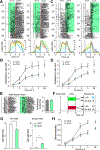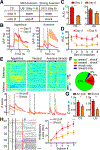Dynamic salience processing in paraventricular thalamus gates associative learning
- PMID: 30361366
- PMCID: PMC6521722
- DOI: 10.1126/science.aat0481
Dynamic salience processing in paraventricular thalamus gates associative learning
Abstract
The salience of behaviorally relevant stimuli is dynamic and influenced by internal state and external environment. Monitoring such changes is critical for effective learning and flexible behavior, but the neuronal substrate for tracking the dynamics of stimulus salience is obscure. We found that neurons in the paraventricular thalamus (PVT) are robustly activated by a variety of behaviorally relevant events, including novel ("unfamiliar") stimuli, reinforcing stimuli and their predicting cues, as well as omission of the expected reward. PVT responses are scaled with stimulus intensity and modulated by changes in homeostatic state or behavioral context. Inhibition of the PVT responses suppresses appetitive or aversive associative learning and reward extinction. Our findings demonstrate that the PVT gates associative learning by providing a dynamic representation of stimulus salience.
Copyright © 2018 The Authors, some rights reserved; exclusive licensee American Association for the Advancement of Science. No claim to original U.S. Government Works.
Figures






References
-
- Knudsen EI, Fundamental components of attention. Annual review of neuroscience 30, 57 (2007). - PubMed
-
- Fecteau JH, Munoz DP, Salience, relevance, and firing: a priority map for target selection. Trends in cognitive sciences 10, 382 (August, 2006). - PubMed
-
- Menon V, Salience Network. Brain Mapping: An Encyclopedic Reference (Elsevier, 2015).
-
- Uddin LQ, Salience processing and insular cortical function and dysfunction. Nature reviews. Neuroscience 16, 55 (January, 2015). - PubMed
Publication types
MeSH terms
Grants and funding
LinkOut - more resources
Full Text Sources
Other Literature Sources

